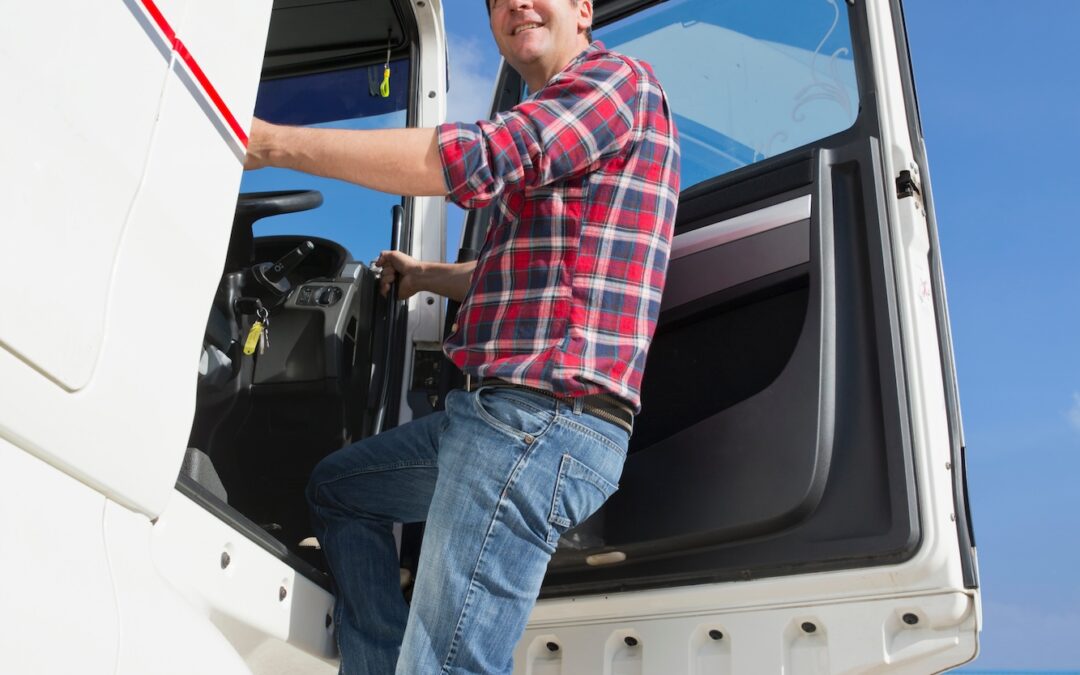Truck drivers and equipment operators who operate commercial trucks and other large equipment may be at risk of injury when mounting and dismounting the truck or equipment. Injuries from slips and falls are among the leading cause of injuries for truck drivers and equipment operators. Workers need to recognize the hazards that contribute to these types of injuries. Only trained and authorized employees should enter and exit trucks and equipment. Training should be conducted with all new employees before they are allowed near the equipment. Safety tips should be provided at other times throughout the year to reinforce the safety of the proper technique.
Discussion Points:
• Injuries associated with mounting and dismounting trucks and equipment
• Only trained and authorized employees should enter and exit equipment
• 3-point contact is the recommended method
• Wear proper footwear and clothing
• Never jump off the truck or equipment
Discussion:
Workers are often injured due to rushing, not following the proper technique, or not paying attention to what they are doing. They should take time to coordinate movement, keep movements slow and steady when mounting and dismounting the cab, and face the equipment at all times. When mounting or dismounting equipment, the recommended method is the 3-point contact technique. This method requires the worker to keep three points of contact with the equipment at all times. Maintaining contact with two hands and one foot or two feet and one hand allows for maximum stability and reduces the chance of slipping or falling. Contact should only be broken after reaching the cab, the ground, or a stable platform. Before entering or exiting equipment, the worker should inspect it. Ensure there are adequate steps with non-slip surfaces, hand grips, or grab bars provided by the manufacturer. These surfaces should be kept clean and maintained; grease, mud, snow, and other hazards can contribute to slips or falls and increase the chance of injury. When entering the truck or equipment, do not use tires, wheel hubs, machine tracks, fuel tanks, fenders, door frames, door handles, steering wheel, or the seat. Plan your steps when entering so you are standing on the same leg as the side of the equipment you are on. If you are on the left side of the equipment, you should stand on your left leg and lift your right leg as you begin to sit down.
The worker should wear proper footwear and clothing. Footwear should give good support and have slip-resistant soles. Avoid loose or baggy clothing that could get caught in the equipment or interfere with contact points. In hot or cold weather, wearing gloves may help with gripping. Never jump off the equipment. Jumping increases force on joints, increasing the chance of injury. Jumping from the top step of a commercial motor vehicle or tractor trailer (approx. 54 inches) can apply as much as 7.1 times your body weight to the back and legs. For a person weighing 200 pounds, that would equate to approx. 1,420 pounds of force applied to the joints, and jumping from a delivery van step (approx. 24 inches) can cause an impact of 3.5 times the body weight. Entering and exiting trucks and equipment safely is important but often overlooked. The key to avoiding injury is to recognize the hazards that contribute to injuries, and know how to protect yourself from harm.
As always, stay safe out there!


Recent Comments